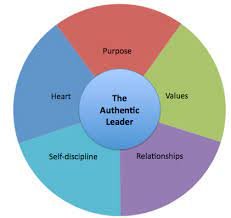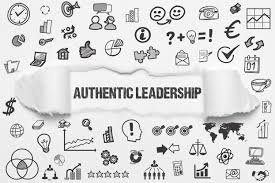Being in touch with the practices you can do to maintain a healthy mindset and manage your energy will be personal to each person. If you do not know where to start, you may want to experiment with many different experiences and see which ones work best.
Here are some practices to test to foster a healthy mindset and maintain high energy levels:
1. Prioritize. Greg McKeown, Author of Essentialism says, “You can do anything but not everything.” What are your top 3 priorities right now, and for how long? When you have too many priorities, it is a paradox of choice, and you can easily get overwhelmed by what you have to do and not know where to start. Similarly, if you do not know your priorities, you will continue to expend energy on discovery rather than execution. Those who are laser-focused on 3 priorities can harness their best energy to move the needle, see progress, and feel good about their actions, and that sequence becomes a reinforcing cycle.
2. Plan. When you plan your day, you can ensure your time is spent well rather than mindlessly moving. There are ways you can work better and smarter. For example, many people find creating a “tomorrow list” helpful. The night before, you list the first 3 things you will do in the morning and allocate time to each item. Even if you do not finish the task, you know you have put in the desired 30 mins. or so on each item, which will help you feel better. Also, you will start your day with intention and not just waste time figuring out what to do. The idea is to do more energy management over time management.
In planning your day building in margin or white space is vital, so you are not back-to-back and have no time for those deliberate moments. These gaps or pauses help us avoid careless mistakes, such as hitting “reply all” when we want to send a direct message to the sender. White space also helps with transitions from one task to another, and to allow for any potential emergencies or delays that might arise. These margins restore our energy, they are like gas for our car that will enable us to go the distance, they help us think ahead so we are not running out of stamps when we have to mail a letter. When you have that buffer time, you can regenerate and recharge. Without this, we live a life of perpetual time famine and rob ourselves of more meaningful and excellent work. For a deeper dive into planning and prioritizing, you can check out my series on this topic.
3. Give gratitude. It is powerful to keep a gratitude journal to capture those aspects you are happy about, however small, such as sleeping late, playing with your pet, working on your hobby, and going for long walks. These activities have the effect of spreading more positivity and contributing to more productivity. Small habits of 2-minute praises or sending emails letting others know they did a great job can make somebody else feel great and be an energy-affirming experience for you.
4. Practice reflection. What space do you take to look back to consolidate the learnings, and be intentional about going forward differently and better? How do you like to pause from the mayhem, rise above the day-to-day and see more of the macro trends of your life to see if it is going in your preferred direction? Planning, setting goals, reviewing them, understanding what worked and what did not, and deducing patterns is an energy-building experience because you can derive meaning from your activities and not have a Groundhog Day feeling where the days blur into each other with no interesting or unique moments. When you aim to identify your best practices for pausing daily, weekly, monthly, and quarterly, it can make a positive difference in your life.
5. Create time for mind wandering. David Rock from the NeuroLeadership Institute talks about the benefits of mind-wandering. It is time for insights or creative breakthroughs, moments to process the past, anticipate the future, and make connections between experiences. But mind-wandering can only happen when our brain is at rest and not goal-focused. Not all downtime activities are conducive to mind-wandering, such as anything goal-focused or that involves multitasking like binge-watching Netflix, listening to a podcast while cooking, social media scrolling, driving while listening to music, and walking with your child, since your attention is also focused on keeping your child safe. Examples of activities favorable to mind-wandering could be anything NOT goal-focused and only involves one task. Taking a shower/bubble bath, walking in nature (and not listening to anything), staring at the window, doing the dishes, and doodling. The activities where you are not trying to solve anything can help your mind find the signal among the noise. The ideal amount of time is 15 minutes a day. The activities will differ for each person, so it is helpful to identify your preference.
6. Allocate time for inspiration. What do you do to stay creative and vitalized in life? How do you like to think, wonder, and fuel your curiosity? Are you reading in your field so you know the latest research and trends? Because our jobs are complex, it can keep us task-focused but when we dedicate time to building our creative capacities, we can be more energized and happier and perform at higher levels with less stress. What are your favorite ways to wonder, imagine, and get more curious? You may be intentional about building your curiosity and create 5 questions and ask 1-2 at your next event. Just writing them down builds that muscle. Maybe on your next bike ride in the mountains, you spend time in the zone where you visualize, dream, and imagine your best self. How do you nurture your passions and connect them to your creativity in your personal and professional life?
7. Time for flow states. Flow, coined by Mihaly Csikszentmihalyi, is an experience that contributes to a happy and fulfilling life. It is achieved when we fully immerse ourselves in an activity where the challenge level is just beyond our abilities. We temporarily lose our sense of self and time. Athletes have this feeling when playing sports and in the zone. People may find flow states when cooking, running, gardening, or any activity that has seized their attention entirely and are fully present. Organizational psychologist Adam Grant mentions one of the best predictors of happiness is having many flow moments. So it is important to view work as stretching your skills and heightening your resolve rather than exhausting you.
8. Carve out time for introspection and inner work. This is some of the most important work we can do as a human and is a great form of self-care. So many people spend their energy on “outer work” where they generate value outside themselves (going to meetings, analyzing data, taking care of customers, presenting, and partnering with others to complete projects). If you want to be centered, less frazzled by change and ambiguity, and more in tune with your values, doing inner work is helpful. This is mindful, conscious effort that we put into organizing and designing our lives. It is the work dedicated to raising your awareness and organizing your mind to be healthy. Marcus Aurelius said, “Tranquility is nothing else than the good ordering of your mind.” When you better understand your mind, you can move towards a more fulfilled and energized life. Looking inward to explore who we are, and who we want to be, and defining the contribution we want to make to the world is priceless. Create the time to think about the big rocks and long-term planning, otherwise, you bounce from one pebble to another, staying small and missing the bigger and more critical mark.
9. Time for learning, growth, and mastery. It is a fundamental need to feel like we are getting better at those things that matter to us. When we intentionally set goals and achieve them, we feel better. Progress, whether a significant accomplishment or a small win, fuels our daily motivation.
10. Mindfulness practice. Mindfulness is about paying attention on purpose and being present. It is easier said than done, considering that, on average, people are checking email, plugged in constantly, and switching tasks every 10 minutes. This time confetti takes meaningful moments, shreds them into useless pieces and is the enemy of excellence. How do you take time throughout the day to take deep breaths, get grounded, and put things into perspective? Mindfulness supports positive development because when we can empty our minds, and get curious about labeling the things that are triggering us and how we want to handle them, that can be a profoundly healing experience. Also, expanding our perspective can give us a more flexible sense of self. Stephen Covey says, if you want to be able to produce, you have to focus on the capacity to produce, and protect that intentional time.
11. Take breaks. Many people believe that they have to go a million miles per hour and be productive all the time to be the best, but it is during those off periods when you are filling your battery and can go the distance. Research shows that once you get to 50-55 hours of work per week, you do not get any more productive. And to maintain the most intense focus is usually around up to 2 hours, after that, our performance drops, and we get less return on our effort. Taking a short break helps recharge our energy levels, and then we can pivot back to intensity. It is the “go slow to go fast” concept, like going for a bike ride on tires that are half filled will make you work so much harder than if you just chose to stop briefly to fill your tires and then can peddle more easily and work smarter.
When we convince ourselves that there is no limit to how much we push ourselves, we operate sub-optimally. In the 1960s, Derek Clayton, worked harder than most as a marathon runner. He would run 160 miles per week, eventually leading to an injury. So, in 1967 when he started preparing for the Olympics, he took a month off to recover, he planned to run it as a preparation for the next race. After an entire month of no training, he broke his previous record by 8 minutes and became the first person to achieve a sub 2 hours and 10 minutes, which would stand for 12 years. Recovering energy is as important as expending it, and top performers know how to fill up on the proper fuel so they can go the distance and they also know how to sprint where they go intense briefly and then rest because that speed cannot be sustained. The muscles need time to rebuild.
The story highlights the importance of rest and recovery. For athletes, it is a clear sign to take a break when their body is aching. But for knowledge workers, when we are feeling emotional or psychological harm (lethargy, anxiety, or depression), it is a sign to recover. These signals can be more subtle and easier to discount so we power through tough times when our mind and heart are pleading to take a break. Painful emotions are the body’s natural warning system, and when we disregard them, we put ourselves in peril. The most creative artists and scientists who are productive are only working 4 to 6 hours a day, they do other things like go on long walks, fish, and play instruments. Where does your recovery time show up in your calendar? How do you listen to music, spend time with friends, enjoy quiet meals, and take walks to restore? Hard work also takes an enormous toll on your life, especially at the expense of other activities.
Take various recharge breaks. Rest is when you are not depleting energy; recharge is when you are actively filling your tank. It is important to know yourself and uncover what recharges you. This will vary, if you are an extravert, socializing or having conversations in a group with others can recharge. As an introvert, that can be depleting, rather a recharge for you might be a one-on-one experience. You want to discover those activities that ignite you. Quilting, working with your hands, gardening, organizing, making art, painting, or anything that makes you feel alive. And if you do not know, it is ok, you can go on a quest for discovery. Take a month and commit to having as many conversations as possible to learn about what works for others. You can also take your time to try several things to see what works for you.
It is important to take different types of breaks that will energize:
· The 15 min. break scattered throughout your day to boost your energy.
· The mid-level recovery break, which is about having great sleep, and taking one day off a week which can make some people even more productive.
· Macro level recovery break is about taking vacations that span a week to a month off a year. Relaxing is the best thing we can do because we get our best ideas when we create space. JP Morgan said I could do a year’s work in 9 months but not 12.
Having various breaks does not mean we cannot cope with difficult and intense periods when required.
In an interview, Lynn Manuel Miranda talks about how the best idea he had to make Hamilton occurred when he was on vacation, in a pool floating with a margarita. It was the moment when his brain could completely unplug from the day-to-day concerns so he could let his mind drift. Daydreaming is fertile ground for spurring creativity.
Get clear on who you want to be on vacation and what emails you will answer, if any. For some, they want to completely disconnect and be on a beach. Others who are not wired that way, may find that spending 10% of their vacation working adds fulfillment to their life and enhances the vacation experience rather than fully relaxing 100%. This is especially true for entrepreneurs who are in love with their work. You should not just do what works for another but understand what works for you and be mindful not to do any stressful work because it would negate your recharge time.
12. Identify your downtown desires. Some people need help figuring out their leisure time. They take time off, feel weird or uneasy and then settle back into something more comfortable and familiar like work, spreadsheets, and emails. High achievers are attracted to work because their identity and sense of self-worth come from what they can produce. It can be measurable and provide a sense of progress, rewards, and accolades. They can go in the opposite direction and do something utterly mindless like binging Netflix.
We have a primal need for recreation and fun. Hobbies and activities make us more interesting and creative. They can build our confidence and contribute to breakthroughs. What pastimes did you have as a kid? How do you still do them or return to them? Also picking up a new hobby puts you in a beginner mindset and helps to cultivate your empathy because you may have been an expert in your field for so long and now you know what it is like to be at the beginning.
13. Develop effective coping mechanisms. Stress is unavoidable, so the goal for wellbeing is not necessarily to live in a state of perpetual calm because that is not realistic nor what this modern world delivers, especially to high achievers. Instead, the key is to move from adversity and stress to safety, calm and back as seamlessly as possible. A little bit of stress can be good for us, it is just when we are stuck in that stress for prolonged periods that does it do us harm such as increasing our hypertension and blood pressure. We have a finite amount of intellectual and emotional resources, and stress takes up a big part of that bandwidth so reducing our time there can be incredibly valuable.
To deal with stress, you can develop 60-90 second resets to course correct stress. They can range from a reminder to think about what you are grateful for, taking three conscious deep breaths, standing up and stretching, looking at a picture of your family, hugging your pet, reading some of your favorite quotes, or listening to an inspiring piece of music. You want to do anything to interrupt the cycle.
It is great when companies can get involved to support this process. As part of onboarding at Thrive Global, Arianna Huffington’s company, people are invited to build their reset activity. And then before a meeting, somebody spins the wheel, and picks one to practice. It is a great way for people to get exposure to different kinds of resets they can do and helps build community. You get glimpses into people’s lives and what is important to them, music they love, movies they watch, pictures of their children, etc. It is a good way to course correct and build social connections. We want to be clear on how to move from that fight/flight state to a place of peace, strength, and wisdom, and having your preferred reset could be a great way to do that.
14. Create emergency plans. List your top concerns that could cause you stress. For example, maybe you are worried that your laptop might crash unexpectedly, can you create redundancy by having a backup laptop (an expensive option) or keeping your data in the cloud to access it and not disrupt your work easily. Perhaps you know you have a big presentation coming up and it always makes you feel better to review how it went after so you might want to call a friend in advance to let them know you would love to chat after your presentation. If you ever feel depleted or burned out, it is good to create a plan to deal with it way in advance while you are not in the moment, then it is just about following the steps. For example, one plan can be, taking the day off, going for a massage, and doing something you enjoy like watching a movie, playing pickleball, or taking a trip somewhere.
15. Use a wellness wheel for consistency. Wellness is the state of being in good health. In advance, you can add your favorite wellness activities (shoot for at least 10), and then have a regularly scheduled time for those wellness activities. This is helpful because you do not have to think about what you want to do at the moment, you just spin the wheel and go for it. And if you are driven by adventure and excitement, the randomness can add another dimension.
Underinvesting in our mental and physical practices damages our chances for leading the most impactful life. Many remedies can help, especially during the times when we are feeling most stuck or in a struggle. Establishing routines in advance of when you need them will be your lifesaver.
QUOTES OF THE DAY: “The greatest weapon against stress is our ability to choose one thought over another -William James
There are many terrible things in my life, and most of them never happened.” -Michel de Montaigne
Q: How do you learn about what you like to do to keep yourself mentally strong? Comment and share below; we would love to hear from you!
The next blog in this series 5/5 will focus on the emotional and spiritual realms for maximizing energy
As a leadership development and executive coach, I work with leaders to create effective personal energy management systems for themselves and their teams, contact me to explore this topic further.




















